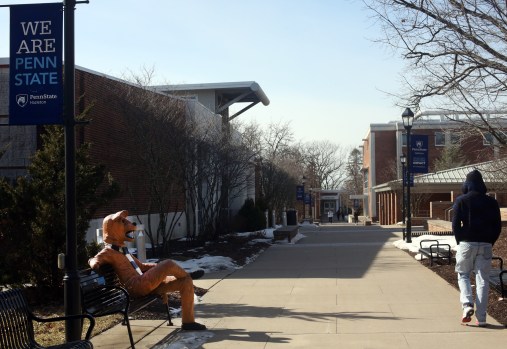
Here’s the latest on Penn State’s financial health and its proposal to close several branch campuses
Financial Strength
Penn State recently reported a $57 million deficit in FY 2023—which was $89 million better than projected—thanks to a combination of $79 million in additional revenue (from investments, grants, etc.) and $47 million in savings through hiring freezes and other cost controls .
The university is now operating under a two-year, data-driven budget model aimed at cost predictability and affordability, with a forecast of reaching a balanced budget by FY 2025‑26 .
🏫 Closure Plan for Commonwealth Campuse
In February 2025, President Neeli Bendapudi announced a comprehensive review of 19 smaller branch campuses. The goal: determine which of 12 smaller regional sites should be closed, while continuing to support the 7 largest Commonwealth campuses (Abington, Altoona, Behrend, Berks, Brandywine, Harrisburg, Lehigh Valley), plus graduate-focused sites (e.g., Dickinson Law, College of Medicine) .
The Board of Trustees voted on May 22, 2025, to close 7 of the 19 branch campuses—Dubois, Fayette, Mont Alto, New Kensington, Shenango, Wilkes‑Barre, and York—due to steep enrollment declines (<4% of total campus population) and mounting financial losses. Closures will take effect after the 2026‑27 academic year .
Impact & Response
These seven campuses enrolled just over 3,000 students (under 4% of branch-campus enrollment) and losing them won’t affect the flagship University Park campus .
The plan includes a two-year transition: current students can complete their degrees elsewhere in Penn State or online, and faculty/staff are eligible for reassignment or transition assistance .
A coalition of faculty—over 500 signees—filed a petition calling this the university’s “biggest employment crisis,” demanding more transparency and greater community involvement .
Balancing Act: Doing Well Financially, Facing Local Trade-Offs
On one hand, Penn State is on a sound financial trajectory, closing its deficit and boosting revenues.
On the other, it’s grappling with nationwide demographic trends: declining birth rates, fewer college-age students, and tighter state funding—especially at smaller campuses .
Officials argue these closures aren’t impulsive but reflect broader higher‑education shifts and a push for long-term sustainability.
✅ Key Takeaways
Penn State is fiscally healthy overall, with improved revenues and a plan to balance the budget soon.
Yet, in contrast, some smaller campuses are financially unsustainable—triggering the decision to close 7 sites to concentrate resources on larger, more viable locations.
Transition plans are in place, but grassroots backlash underscores the emotional and economic fallout in impacted communities.
What’s Next?
Upcoming: phased campus closures through 2027, support services for students and staff, and ongoing monitoring of financial and demographic trends guiding future decisions.
Expect continued legislative scrutiny, community engagement, and perhaps even state funding discussions as rural areas weigh the long-term costs of losing local campuses.
Leave a Reply